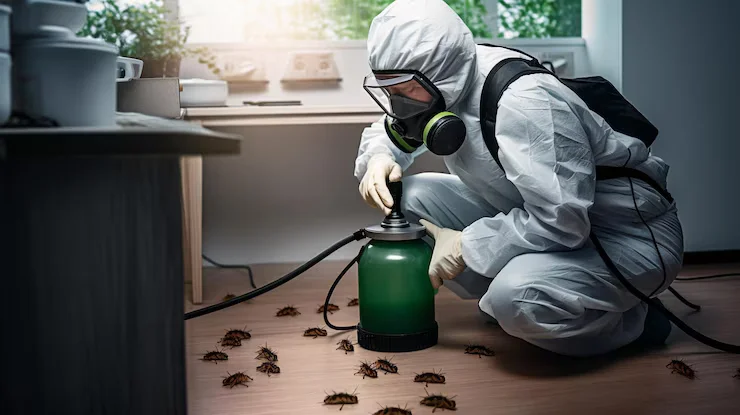Why Home Pest Threats Are Rising
In recent years, households nationwide have reported growing concerns about pest invasions inside their homes and apartments. The reasons go well beyond seasonal changes—shifting climate patterns, frequent heavy rains, and warmer winters have all contributed to extended pest lifecycles and higher populations. Urban sprawl and development have further displaced rodents and insects, driving them toward human residences in search of food and shelter. When you combine these factors with increasingly complex building designs offering more hidden nooks and small cracks, it becomes clear why the issue is rising.
As homeowners adjust to these realities, the importance of adopting a proactive prevention plan is more apparent than ever. Instead of waiting for an infestation to take hold, many individuals are researching ways to safeguard their homes. According to recent news reports on rodent control challenges, cities and suburbs across the U.S. are now recording all-time highs in rodent activity, with health officials warning about the risks of disease and property damage. Reliable prevention advice is in high demand, with resources like CT Pest Solutions emphasizing the critical steps every resident should consider. Proactive measures spare homeowners from stress and protect families from costly, long-term consequences tied to unchecked pests.
Simple Routine Habits for Pest Prevention
The foundation of pest prevention is found in the habits people practice every day. Pests are drawn to the essentials: food, water, and shelter. Making a home inhospitable for them often starts with the basics. Sweeping floors, wiping countertops, and taking out food scraps may seem mundane, but these actions eliminate the crumbs and residues that often act as a dinner bell for ants, cockroaches, and rodents. Even pet food left out overnight can become an easy feast for unwanted guests.
Moisture control is equally important, as many common pests—like silverfish and centipedes—are attracted to damp environments. Repairing leaking faucets and ensuring bathrooms, kitchens, and basements stay dry can dramatically reduce the likelihood of infestations. It’s also essential to manage clutter, as piles of old newspapers or boxes in attics and basements can become hiding spots for spiders or mice. These tasks may sound simple, but integrating them into weekly routines can form a substantial barrier against various pests.
Want to learn more? Our other posts are just a click away!
Sealing Entry Points: Where to Look
Even the cleanest homes are at risk if pests can slip through the smallest gaps. Entry point inspection is a proactive step that pays off quickly. Doors and windows are classic culprits, with time and weather stripping leading to small openings that seem insignificant to the human eye but are gateways for ants, mice, and even larger pests. Homeowners should regularly check for daylight around frames and make timely repairs.
In addition to doors and windows, utility entry points are often overlooked. Use steel wool or expanding foam to fill gaps where pipes, wires, and cables enter the home. Foundation cracks—sometimes hidden beneath landscaping—must be periodically checked and sealed. Even attic and crawl space vents, which should always be covered in fine metal mesh, can allow rodents or birds to invade. A detailed annual walkthrough inside and outside the home can significantly reduce risk. After heavy storms, earthquakes, or construction activities that may shift or crack surfaces, another round of inspection is a good idea.
Outdoor Maintenance and Landscaping Tips
The boundaries between outside and inside can determine how welcoming a home is to pests. Overgrown trees and shrubs offer direct highways to roofs, attic vents, and upper-story windows—especially for squirrels, ants, and termites. Keeping all vegetation trimmed back by at least a foot reduces easy access. Fallen leaves, excess mulch, and even stacked firewood near the foundation can create perfect nesting or hiding zones for animals and insects.
Water management matters just as much as plant care. Ensuring proper yard drainage after rain prevents the formation of stagnant pools, breeding grounds for mosquitoes, and can even attract rodents looking for water. Routine yard work—including mowing, raking, and clearing outdoor debris—transforms a property into an unfriendly environment for pests. These landscaping practices serve a dual purpose—improving outdoor aesthetics and protecting the home’s perimeter.
Safe Food Storage and Kitchen Sanitation
Kitchens are often the front line of defense in the fight against pests. Once inside, insects and rodents naturally gravitate toward pantries and hidden corners where they might find an easy meal. Proper food storage is essential: Airtight containers for cereals, grains, and snacks keep odors sealed in and pests out. Even pet food can be a powerful attractant if not stored in a lidded bin.
Beyond storage, effective cleaning routines make a significant difference. Wiping down counters and immediately dealing with spills—especially sticky liquids or sugary crumbs—removes those tempting signals for pests. Scrubbing behind appliances, such as refrigerators and stoves, addresses grease and crumbs that often go unnoticed. Even fruit should be stored in the refrigerator, since a single overripe pear or banana can result in a fruit fly explosion in mere days. Pantry checks for damaged packaging, gnaw marks, or small droppings should become a regular habit to catch problems early.
Leveraging Technology: Smart Home Pest Tools
A wave of technology is making pest management easier and more precise. Where older traps and repellents required constant manual checks and guesswork, now there are smart traps that send alerts to your phone after a catch and ultrasonic pest repellents that continuously keep critters at bay without chemicals. Homeowners can use motion-sensor cameras indoors and out to monitor high-risk spots, while moisture sensors alert to leaks that could attract pests.
According to the latest research from MIT, these innovations aren’t just about convenience. Innovative pest solutions can help reduce pesticide use, monitor populations in real time, and lead to earlier interventions, potentially saving money and hassle. Connected tools provide visibility and peace of mind for those who travel or manage multiple properties. While technology can’t replace good hygiene and solid maintenance, it’s quickly becoming an essential component of the modern pest prevention toolkit.
When to Seek Professional Help
Despite the best efforts, some infestations outpace what most homeowners can manage alone. Recognizing when to bring in a specialist can save time, prevent damage, and protect household health. Persistent foul odors, evidence of droppings or nesting in hard-to-reach areas, or frequent sightings of pests during daylight hours are all signs that a problem may be larger than it appears. Electrical issues or weakened wood can point to rodent activity or termites, requiring specialized intervention.
Pest control professionals have access to treatments and tools unavailable in stores and the experience to identify points of vulnerability and potential secondary issues. They can establish a comprehensive, property-wide plan and quickly neutralize threats that could otherwise become long-term headaches. Early intervention by experts is significant for homes with immune-compromised individuals, small children, or valuable and historic structures that could be further harmed by unchecked pest activity.
The Future of Pest Management
The world of pest control continues to evolve, with a growing emphasis on sustainable, low-impact methods and intelligent monitoring. Homeowners increasingly opt for biological controls, plant-based repellents, and eco-friendly exclusion methods rather than broad-spectrum sprays. Non-toxic baits and traps paired with digital monitoring help ensure effectiveness while reducing risks to people and pets.
Staying informed about broader public health developments, such as updates from the Centers for Disease Control and Prevention on rodent-borne diseases, empowers homeowners to prioritize what matters most for their families’ well-being. Taking a holistic, preventive approach—combining habits, technology, outdoor maintenance, and professional insight—empowers today’s homeowners to outsmart pests and keep their properties secure for years to come.
Thanks for reading—why not stick around and see what else is new?







